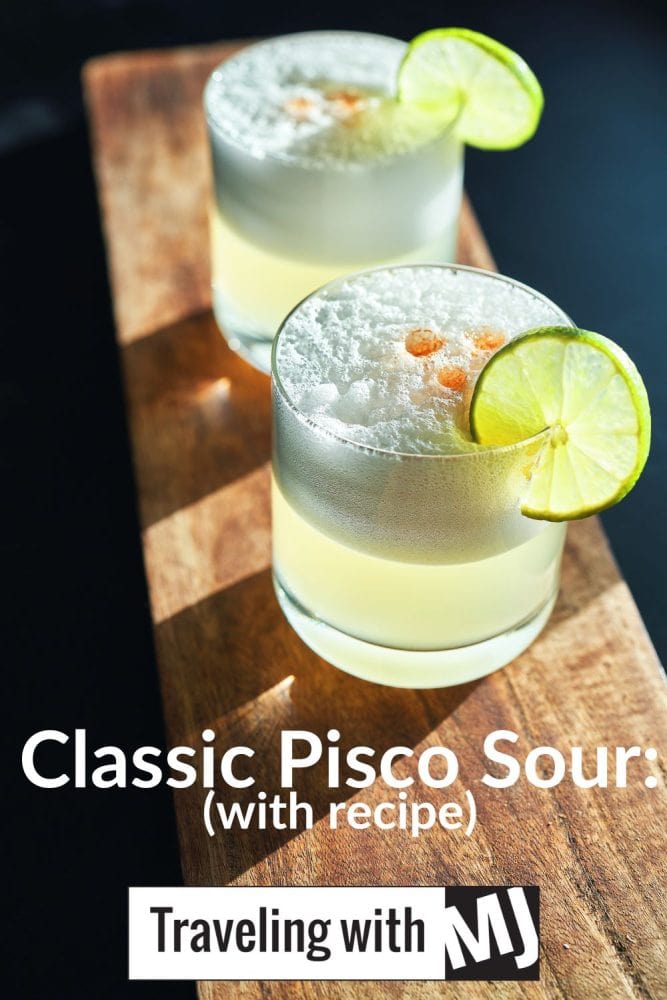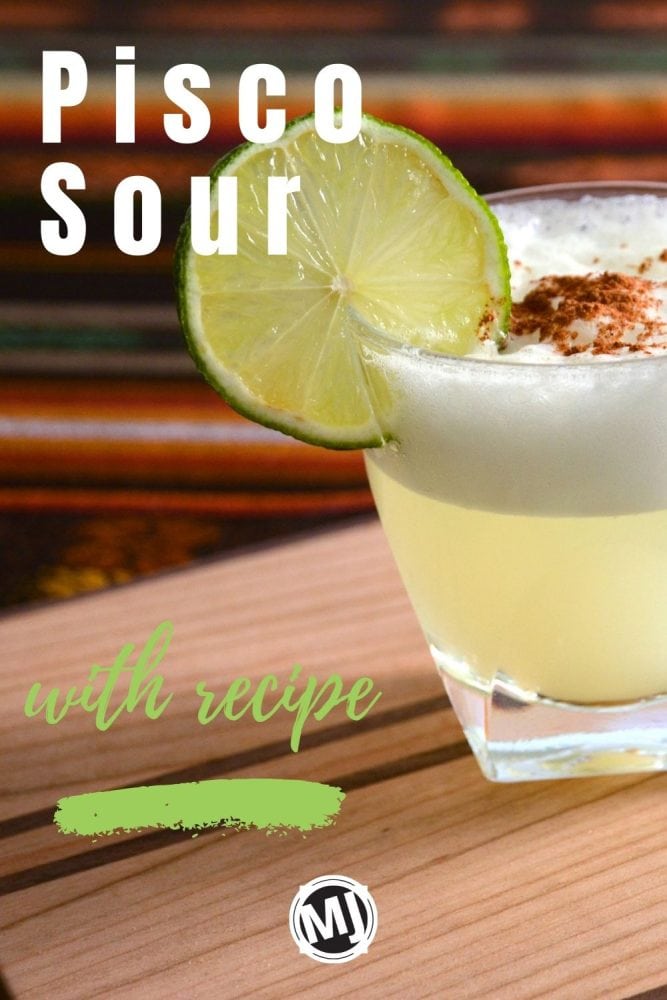While cruising in South America last year – Peru and Chile – I was reintroduced not only to the Pisco Sour cocktail, but also to the history and debate between the two countries as to which gets to claim authenticity.
I love recreating food and beverages from my travel when I get home, and South America is rich in choices (check out my ajiaco from Colombia). Why not review the debate and make up your own mind while enjoying this classic sipper.
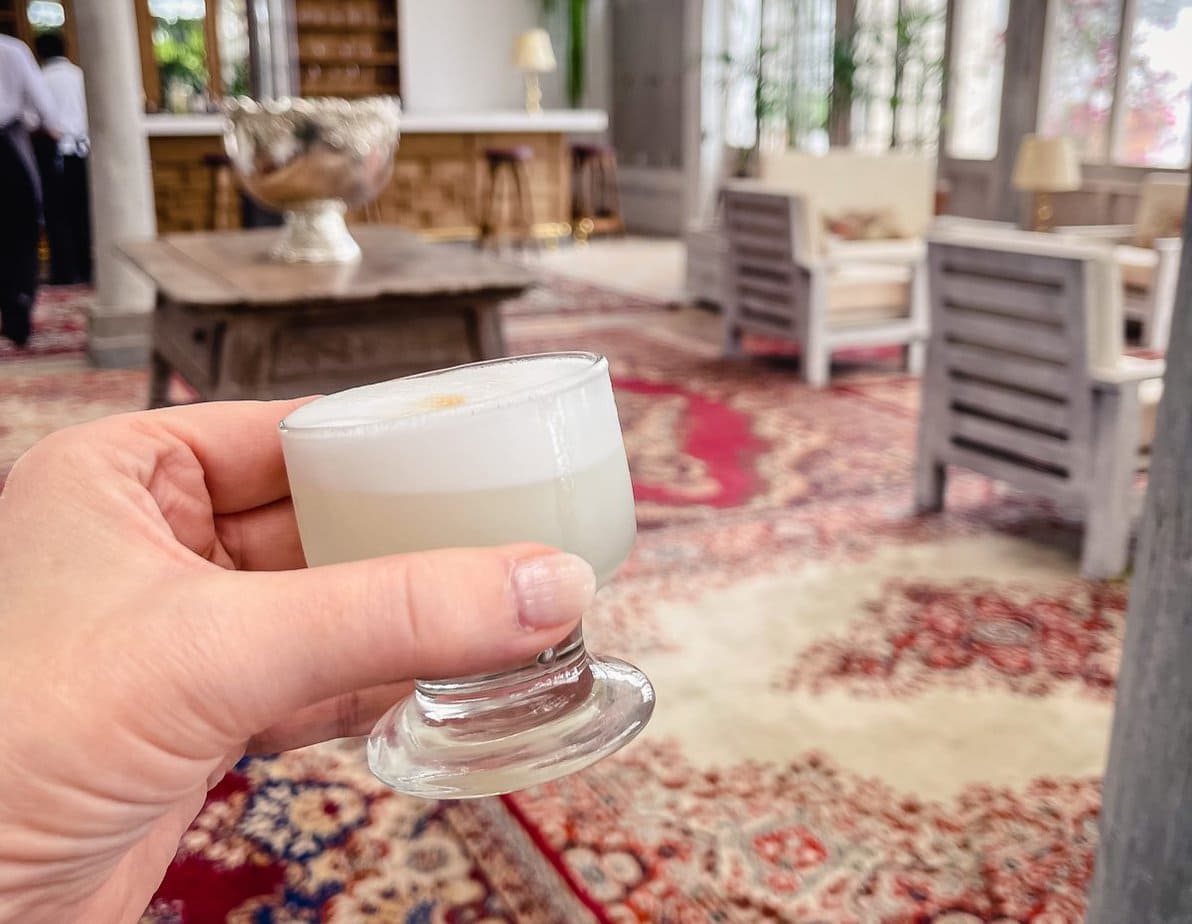
So, What Exactly is a Pisco Sour?
The pisco sour is a traditional alcoholic cocktail that originates from the Peruvian capital of Lima.
The name of this earthy and refreshing drink comes from the liquor from which it is made – pisco. Pisco is, in a technical sense, a form of brandy as it is made from distilling fermented grape juice. The difference here is that it doesn’t go through the aging process that other brandies do. The spirit itself can be colorless or have a slight yellowish hue.
There are many cocktails and drinks that can be made using the pisco liquor as the base spirit, but the most well known is the pisco sour. The drink is prepared using pisco, freshly squeezed lime juice (representing the sour), simple syrup, egg whites, ice, and Angostura bitters. All the ingredients are put into a cocktail shaker, except the ice and bitters, and shaken vigorously. This is known as a dry shake and helps to develop the foamy head of the drink. The ice is then added, and it is shaken again. Finally, it is strained into a glass and garnished with bitters.
Full Peruvian Pisco Sour recipe below.
Peruvian vs. Chilean Pisco
Now, there’s a bit of a war (not in a literal sense) between Chile and Peru when it comes to pisco. They both believe their pisco products are superior. No surprise there!
While Chile has won the battle of producing more pisco than Peru, the Peruvians believe they produce a far superior product. Of course, the only way to determine which is the best pisco is to sample – extensively – and form your own opinion. Until then, we’ll skip the quantity vs. quality debate, and point out a few basic factual differences.
There are a couple main differences in the two products from a production point of view.
Starting with the base grapes, Chile uses grape varietals such as Muscat, Pedro Jimenez, and Torontel. Peru on the other hand uses a much larger spectrum of grapes varietals that includes Quebranta, Negro Corriente, Torontel, Albilla, Uvina, Moscatel, Italia, and Mollar. I was unfamiliar with a lot of these grapes, so spent a bit of time doing some research when I returned home (from both Peru and Chile).
Next difference is in ageing of the liquor in the two countries. Chile allows for the aging of its pisco in wooden vessels. This can alter the color and taste, giving the pisco a brown hue with notes of maple and vanilla. Peru on the other hand, doesn’t allow for barrel aging and its pisco is aged in vessels such as clay, glass, or stainless steel for a minimum of three months.
The final difference has to do with additives. Chilean pisco often has water added to it to reduce the alcohol by volume to ensure it is at 40%. Peruvian pisco is not allowed to have any additives whatsoever, making it a purer and arguably higher quality product.
While I’m not going to weigh in on which is the best, it is safe to say that Peruvian pisco is a more traditional product while Chilean pisco has adopted modern techniques and that have altered the flavor and appearance.
History of the Pisco Sour
While the word “pisco” dates back to pre-Inca times, pisco sour cocktails weren’t invented until around the early 1920s. A bar in the heart of Lima called the Morris Bar is believed to have invented the pisco sour. It was advertised as one of their specialty cocktails, and this is believed to be the oldest known evidence of the drink. Cheers to the bar owner Victor Morris.
The pisco sour was created as an alternative to the whiskey sour – a drink that used the traditional Peruvian liquor in place of imported whiskey. While the pisco sour seems like an odd and somewhat incongruous combination of ingredients on paper, the end result is heavenly. It’s just the right amount of all flavors – sweet, sour, silky, and a bit herbaceous.
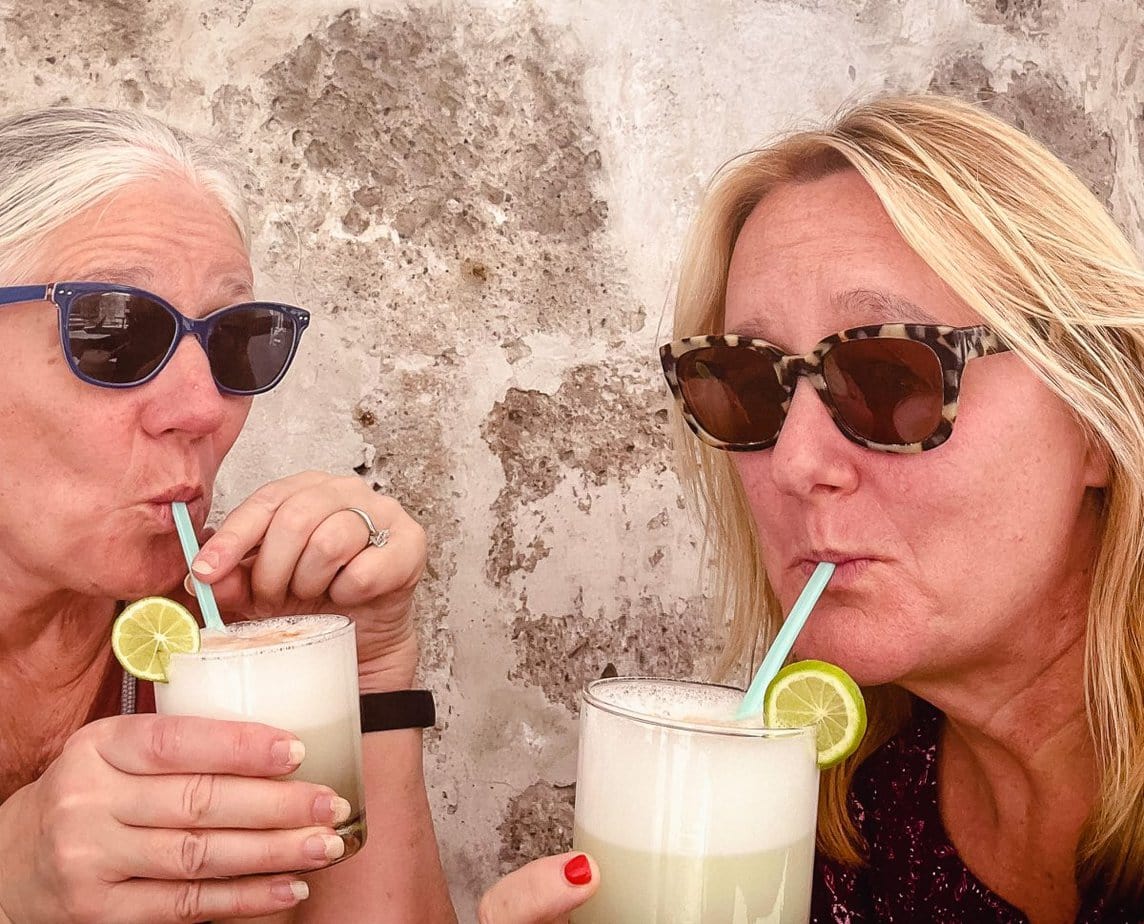
In 2013, the European Commission declared that the drink was in fact recognized as being created by the Peruvians, putting to bed an age-old debate. Not surprisingly, Peruvians have declared it the national drink of Peru. To the victor, the spoils!
Fun Fact: International Pisco Sour Day is celebrated on the first Saturday in February. (Also referred to as National Pisco Sour Day and World Pisco Sour Day.)
Variations on the Classic Pisco Sour Cocktail
When you find a good thing, you know someone (or many) are going to create their own riff on the classic. While I love the classic cocktail, I’ll probably give a few of these variations a try.
- Try using fresh lemon juice, or a mix of part lime juice and part lemon juice, instead of fresh lime juice. Lemon juice makes a tarter drink.
- Angostura bitters are the classic choice, but other aromatic bitters can be used. Peychaud bitters, used in the Sazerac cocktail, is a popular substitution. Bitters have evolved in the last few years, so experimenting with your favorites may result in your own pisco creation.
- While we’re discussing bitters, how much is a dash (or drops of bitters)? A dash of bitters is somewhere between 1/8 teaspoon and 1/4 teaspoon. I recommend experimenting to discover the taste profile you prefer.
- For a vegan option, or if you want to avoid raw eggs, Aquafaba is an alternative. Aquafaba is the liquid leftover from cooked chickpeas. It can be purchase directly or you can make your own.
- Other pisco cocktails include fun options like a Mosquito (pisco mojito), Pinecone (made with pisco and mead), Pisco Collins (pisco Tom Collins), and the classic pisco punch,
How To Make a Pisco Sour
When I returned from South America, Alex Hildebrant and Ian Leggett, the Peruvian-American cofounders of Suyo, reached out to me. They are relying on local connections in Peru to produce their unique Pisco for audiences in the United States, and asked if I wanted to give it a try. since I’d fallen in love with the Pisco Sour while traveling, eagerly said yes.
There are more than 500 pisco producers in Peru, the majority small, family-owned vineyards and distilleries that are unknown outside of their region. SUYO is a pisco discovery initiative dedicated to empowering small batch pisco producers, raising awareness for the category, and sharing amazing pisco with the world. Every batch of pisco is unique, and SUYO embraces the distinctiveness of each vineyard’s terroir. They partner with independently-owned vineyards to present limited batch, single origin pisco, all the while paying above market prices for pisco and sharing profits from every bottle with our partner producers to re-invest in their vineyards and agricultural practices. Consider this drinking for good.
If your mouth isn’t watering by now, then the pisco sour cocktail might not be for you. For everyone else, including those who might be one the fence, you need to try it at least once. Or twice. Or several times.
I love the way the subtly sweet white foam head eases into the chilled, sour and refreshing liquid below. It’s easy to make at home, with only a few ingredients required (and if you have a well-stocked bar, you probably have everything at home already). Join me in getting in the Peruvian spirit and whip up a Pisco Sour today.
Classic Pisco Sour Cocktail
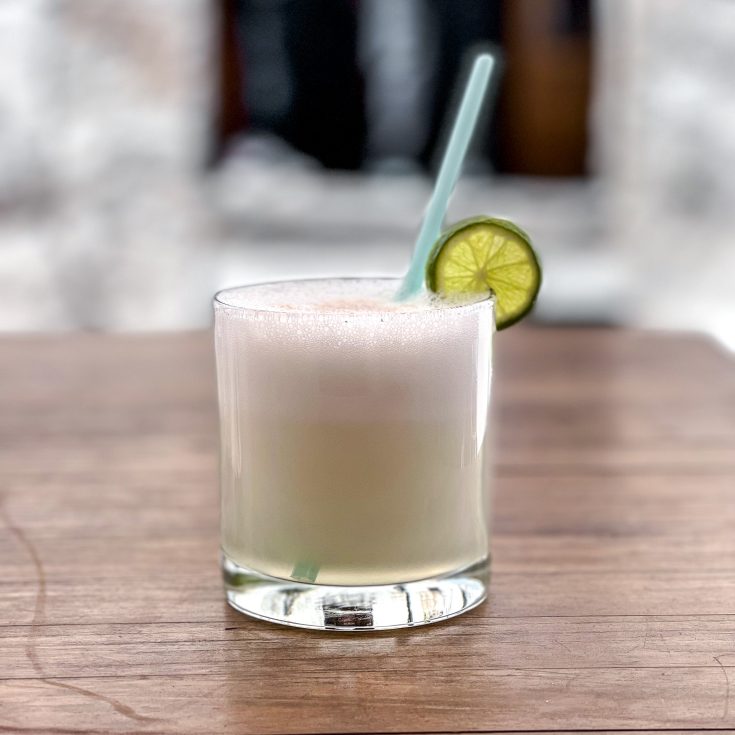
Ingredients
- 2 oz pisco liquor
- 1 oz fresh lime juice (approximately one lime)
- 3/4 oz simple syrup
- 1 fresh egg white
- Angostura bitters (to taste)
Instructions
- Squeeze lime(s) to get sufficient fresh juice.
- Put pisco, lime juice, simple syrup, and egg white in a cocktail shaker. Shake vigorously about 10 seconds. The liquid will become frothy.
- Add ice to cocktail shaker and shake again for about 10 seconds to chill liquid.
- Strain in cocktail glass.
- Garnish with dash(es) of bitters (to taste) on top of the froth.
Notes
To make simple syrup:
The usual recipe for simple syrup is equal parts boiling water and sugar. I prefer it a little thicker as I've found it gives a better mouth feel for drinks. I use the ratio of 1 1/2 cup sugar to 1 cup boiling water. It keeps in the refrigerator and I like having it handy.
Nutrition Information:
Yield:
1Serving Size:
1Amount Per Serving: Calories: 367Total Fat: 0gSaturated Fat: 0gTrans Fat: 0gUnsaturated Fat: 0gCholesterol: 0mgSodium: 57mgCarbohydrates: 15gFiber: 0gSugar: 13gProtein: 4g
(NOTE: nutritional information is auto-generated and should only serve as an estimated guideline)
Want more travel stories like this one? Subscribe to our bi-weekly newsletter here.
Save to your favorite Pinterest Boards
